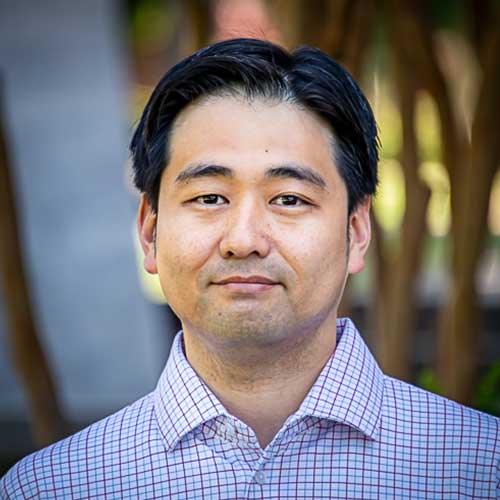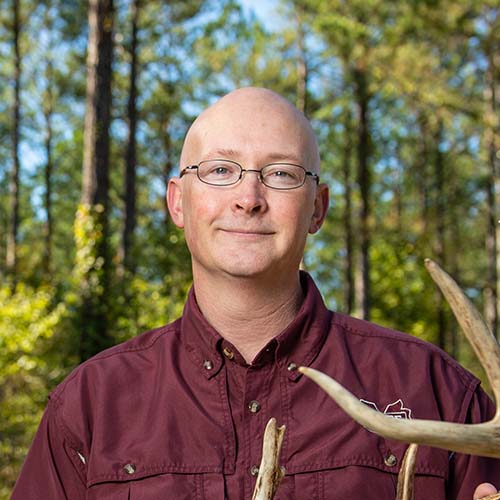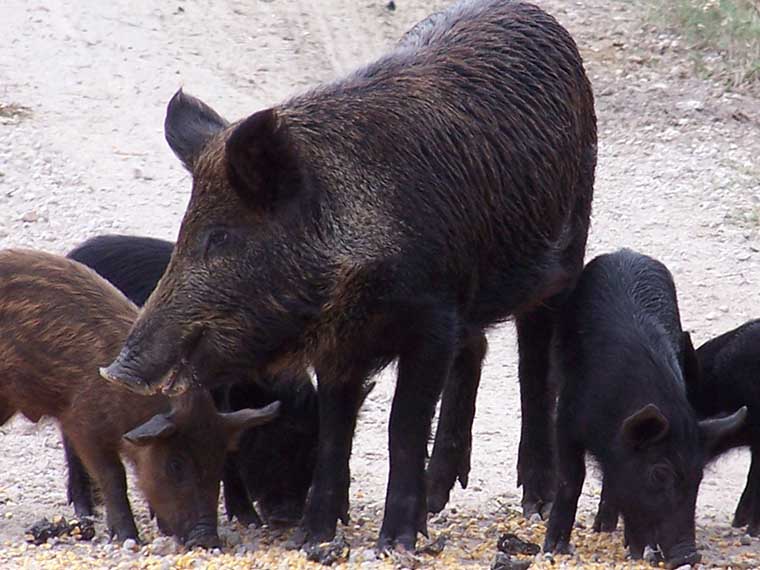The information presented on this page may be dated. It may refer to situations which have changed or people who are no longer affiliated with the university. It is archived as part of Mississippi State University's history.
The economic losses from feral swine, also known as wild hogs, are significant, topping $60 to 70 million in damage in Mississippi alone and costing more than $1.5 billion in the U.S. each year when you consider damage and control costs. MSU researchers have found that feral swine not only cause significant damage to agriculture, land, and infrastructure, but it is also estimated that feral swine decrease vertebrate native species diversity by as much as 26 percent.
"While feral swine aren't native to North America, they've certainly been here a long time with documentation dating back to Hernando de Soto, a Spanish explorer who came to the continent in the 1500s," said Dr. Bronson Strickland, St. John Family Endowed Professor of Wildlife Management in the MSU Forest and Wildlife Research Center.
Strickland explained, "Explorers would commonly take domestic swine with them for a source of food, and then would turn some loose to establish a wild population for food purposes. Today, the most common cause of feral swine population spread is people illegally transporting and releasing them for hunting."
Now in Mississippi, there are feral swine in every county, causing damage to crops, pasture, forestland, and infrastructure. That is why researchers in the Mississippi Agricultural and Forestry Experiment Station are finding ways to effectively manage the abundance of feral swine.
Dr. Seong Yun, a MAFES researcher and an assistant professor in the Department of Agricultural Economics, is leading a project titled "Management of smart invasive species using spatial optimal control: A pilot study of feral swine in the Delta." Yun is using data from a previous MSU study called the feral swine biogeography project which uses GPS technology and trail cameras to collect data.
Besides Strickland, Yun has joined forces with MAFES professors Dr. Kalyn Coatney, associate professor of agricultural economics, as well as Dr. Garrett Street, assistant professor in the wildlife, fisheries and aquaculture department. The team began the research in January 2019 and will finish up in December.
Yun learned about feral swine from Strickland and Coatney.
"I have studied many kinds of invasive species before, but feral swine is quite different from others," said Yun.
He said Coatney and Strickland asked him if he had ever heard of feral swine's ability to learn.
"I was confused by what they meant by 'learning,'" Yun said.
Strickland and Coatney then explained that swine living in the wild tend to avoid places where other swine have been killed by traps or hunters.
"That's when I started calling feral swine 'smart species' instead of 'invasive species,'" Yun said.
As a resource and environmental economist, Yun believes in helping to create environmental sustainability for native wildlife in Mississippi and beyond, so when he learned more about the issue of feral swine, he wanted to do his part.
"Many of the concepts currently studied in resource and environmental economics assume that invasive species aren't that smart," he said. "But, for example, I have two cats, and they learn from me. I can make them sit in front of their food and do certain tricks. Animals can learn, and that increases their survival rate. If feral swine are not showing up in the same place where other feral swine have been killed, that means that they are learning. That is a natural protective mechanism that animals have."
The research's objective is to understand invasive species using a model that explains feral swine's movement while keeping their population effectively controlled and sustaining agricultural outputs. By relying upon data collected from previous projects on feral swine, the research plans to fill in the gap between current bio-economic modeling and the feral swine's adaption to an environmental situation.
"The approach my team is adopting is called bio-economic modeling. Our bio-economic modeling includes the feral swine population's growth and ability to learn, hunting and trapping to reduce the population, and agricultural damages caused by the herd. We are trying to find the optimal population control-how effective is hunting and trapping-by considering the growth of the feral swine population, which is the biological side, and the cost of hunting and trapping to support the minimum agricultural loss-the economic side," said Yun.
While the research is ongoing, researchers hope to first determine the economics of invasive species in relationship to population control while also including learning behavior. Then Yun will use the GPS data collected by Strickland and Street to analyze the feral swine problem in the Mississippi Delta including such factors as agricultural damage, feral swine learning behavior, and movement in a model. From there, the team will then discuss possible management and policy implications from the results.
Together, they are learning how to best outsmart evasive, feral swine.
"As a land grant university, it is our primary focus to take care of our Mississippi farmers first," Yun said. "In the background though, we hope the research will expand to help other areas in the U.S. that suffer from problems with feral swine."
As a land grant university, it is our primary focus to take care of our Mississippi farmers first. In the background though, we hope the research will expand to help other areas in the U.S. that suffer from problems with feral swine.
Dr. Seong Yun
Behind the Science

Seong Yun
Assistant Professor
Education: B.A., M.A., Economics, Seoul National University; M.A., Mathematics, the State University of New York at Buffalo; Ph.D., Agricultural Economics, Purdue University
Years At MSU: 2
Focus: Resource and environmental economics; sustainability in agriculture, fisheries, and water
Passion At Work: This research will contribute to enhancing the general understanding of mobile and learning invasive species.

Bronson Strickland
St. John Family Professor of Wildlife Management
Education: B.S., Forest Resources, University of Georgia; M.S., Range and Wildlife Management, Texas A&M University-Kingsville; Ph.D., Forest Resources, Mississippi State University
Years At MSU: 13
Focus: Research and outreach to assist hunters, landowners, and wildlife managers
Passion At Work: I love working on research that will help people manage our wildlife resources more effectively.

